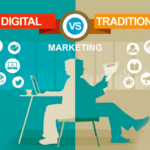Firms must spend money to create time, place and ownership utilities as discussed earlier. Several studies have been made to measure marketing costs in relation to overall product costs and service costs and most estimates have ranged between 40-60 percent. These costs are not associated with raw materials or any of the other production functions necessary for creating form utility. What then does the consumer receive in return for this proportion of marketing cost? This question is answered by understanding the functions performed by marketing.
In the following table, marketing is responsible for the performance of 8 universal functions: buying, selling, transporting, storing, standardizing and grading, financing, risk taking and securing marketing information. Some functions are performed by manufacturers, others by marketing intermediaries like wholesalers and retailers. Buying and selling, the first two functions represent exchange functions. Transporting and storing are physical distribution functions. The final four marketing functions – standardizing and grading, financing, risk taking and securing market information – are often called facilitating functions because they assist the marketer in performing the exchange and physical distribution functions.
Table Functions of Marketing

Amazon.com could well go down in history as a love child born of the heady fling that the stock market had with dotcoms in the late 1990s. But the company, founded by Jeff Bezos in July 1995 when the internet was still an untested business medium, is a survivor-par-excellence. It floundered a bit in the swirl of the dotcom bust, but unlike thousands that were swept away, Amazon.com reinvented itself and emerged stronger. The 40-year old Bezos, a computer science grad from Princeton University, is the pioneer of Internet Retailing. His compelling vision introduced a new paradigm for retail, the click-and-buy model; buy goods from a website instead of a physical store, from wherever there is an internet connection: home, office or cyber-café. A model that gave convenience to buyers, and mind-boggling market reach to sellers.
Named after the mighty Amazon river and its numerous tributaries that surge through dense rain forests, Amazon.com was started with an initial investment of a few thousand dollars. In less than three weeks after the website went live, Bezos and his wife Mackenzie were pulling in sales of over $20,000 a week. And soon after going public in 1997, the company had a market capitalization higher than that of its brick-and-mortar rivals. In 1999, Bezos was chosen as Time Magazine’s ‘Person of the Year’. But things changed soon after and the dotcom bust saw Amazon.com lose almost 90 percent of its market cap in 2000.
Bezos didn’t give up on his vision. He set about transforming Amazon.com from a website selling books into something much bigger: the world’s largest online retailing platform. A series of tie-ups with companies like Toys R Us and Target helped give the website the feel of an online supermall where a customer could buy almost anything. Marketing initiatives followed – from free shipping to highly discounted prices to very customized offerings (based on customer profile) to wide distribution through sites which can divert traffic to Amazon.com for a small commission. But the biggest move was Bezos’ decision to make the site ‘more global’.
The moves have paid off. The company announced its first full-year profit in 2003. It has been making money now for three straight quarters and revenues have exceeded a billion dollars for the last six quarters. If proof was needed that there is money to be made in online retailing, this is it. And Bezos has proved that the right idea, coupled with perseverance, pays in the end.


